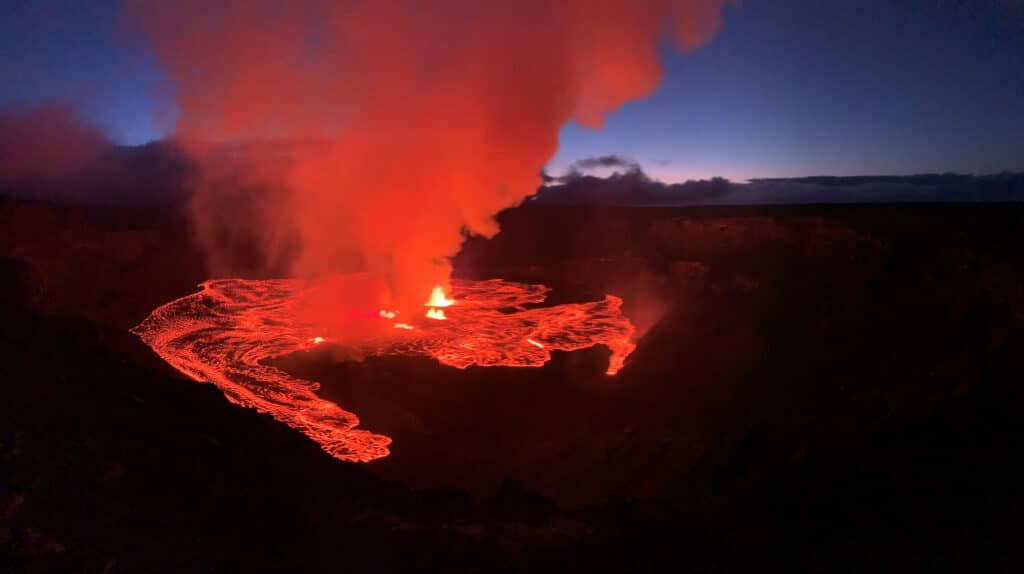USGS Livestream: Lava Streams Pour From Hawaii’s Kilauea

Streams of molten lava spilled from Hawaii’s Kilauea volcano from Saturday night into Sunday as scientists warned that another eruption was likely to form in the coming days, the US Geological Survey said.
Kilauea sits within Volcanoes National Park on Hawaii’s Big Island and is one of the most active volcanoes on the planet. It has erupted on and off for nearly a year with the next episode expected to be its thirty seventh since last December.
These bursts are typically marked by jets of lava shooting from the ground and rising high into the air. Visitors are still able to view the activity from within the national park since the flows remain contained and pose no threat to homes or buildings elsewhere on the island, officials said.
This weekend’s activity began on Friday morning when fiery spillovers from two vents started and continued across Saturday and Sunday according to the USGS Hawaiian Volcano Observatory which has issued regular updates. The agency expects the eruption to be fully under way sometime between Sunday and Tuesday.
Eruption Livestream
A USGS livestream captures glowing rivers of lava running down the slopes as thick smoke rose from the surface. The agency said gas plumes containing sulphur dioxide were visible late on Saturday from both vents though levels matched typical readings seen during pauses between eruptions which usually range from 1,200 to 1,500 metric tonnes per day. That is roughly 1,300 to 1,650 US tons. By Saturday the USGS had logged at least 24 overflows from Kilauea’s south vent during the current episode which produced dome shaped fountains around 30 feet tall.
Kilauea’s previous eruption took place on November 9 and lasted for nearly five hours. Lava fountains reached heights of about 1,200 feet at one vent and 750 feet at the other. In total the volcano released almost 11 mln cubic yards of lava at a combined rate of more than 600 cubic yards per second. That output would fill an Olympic swimming pool which normally holds about 3,300 cubic yards of water in just over five seconds.
During that November event lava ultimately coated around 80% of the Halemaumau crater where the vents are located the USGS said.

